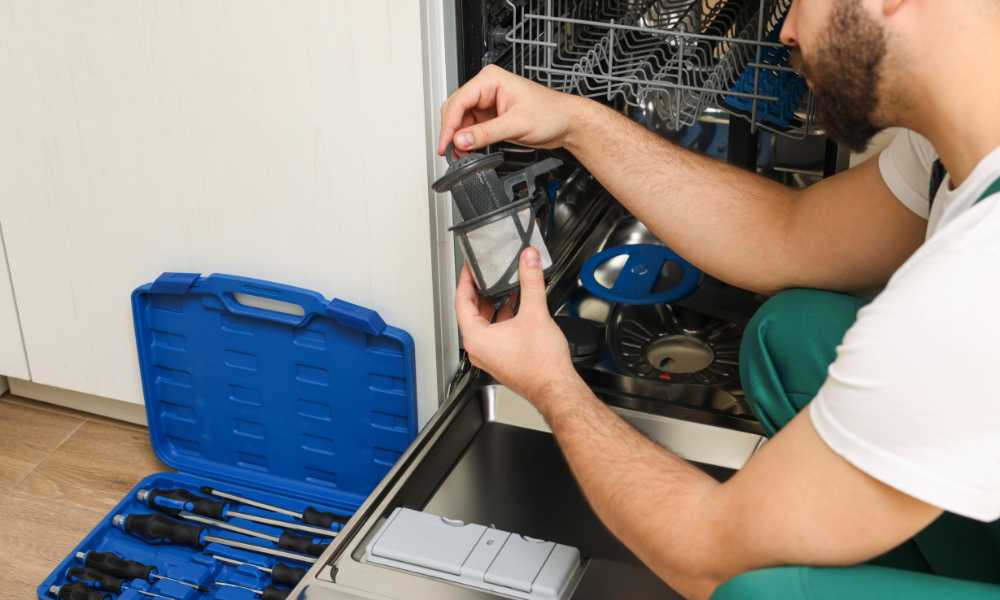If you’re asking, “Why is my Dishwasher Not Draining” you’re not alone. A dishwasher that doesn’t drain properly is a common yet frustrating issue for many homeowners. When water pools at the bottom of your dishwasher, it can disrupt your daily routine and leave dishes dirty. Understanding the root causes behind this problem is key to resolving it quickly and effectively. From clogged filters to malfunctioning pumps, several factors can contribute to drainage issues. In this article, we’ll explore the top reasons why your dishwasher isn’t draining and provide practical solutions to help you get your appliance back in working order.
Common Causes of Dishwasher Not Draining
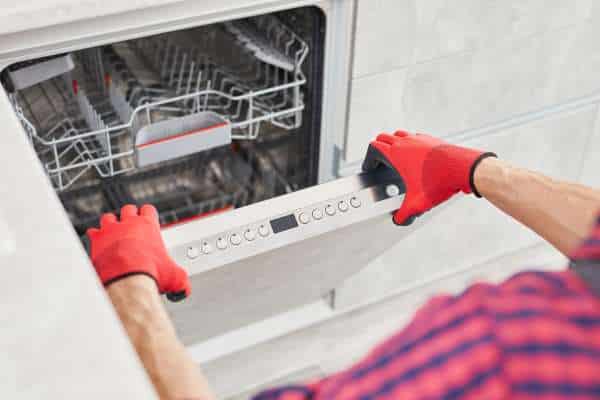
When dealing with a dishwasher that isn’t draining, there are several common causes to consider. One of the most frequent issues is a clogged filter, which can prevent water from flowing properly. Another possibility is a faulty drain pump, which might not be able to expel water efficiently. Additionally, a blocked or kinked drain hose can restrict water flow, causing drainage problems. These issues can often be fixed with simple maintenance, but identifying the root cause is essential for effective troubleshooting. In this article, we’ll delve into these common causes and provide actionable solutions to help you resolve the drainage issue quickly.
Checking the Dishwasher Filter
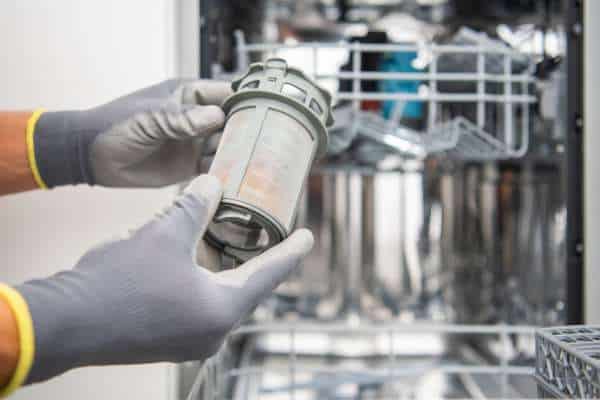
Troubleshooting “Why is my Dishwasher Not Draining,” one of the first things to check is the dishwasher filter. The filter plays a crucial role in ensuring proper drainage by trapping food particles and debris that could otherwise clog the drainage system. A clogged filter can easily prevent water from draining correctly. To clean it, start by locating the filter, usually at the bottom of the dishwasher. Remove it carefully and rinse it under warm water to remove any buildup. Use a soft brush to scrub away stubborn debris. Once clean, replace the filter and test the dishwasher to see if the drainage issue is resolved.
Inspecting the Drain Hose for Blockages
Dealing with a dishwasher not draining, one of the first things to check is the drain hose. A clogged or kinked hose can easily prevent water from draining properly. Over time, food debris, grease, or even a bend in the hose can cause blockages that restrict water flow. To inspect the drain hose, start by disconnecting it from both the dishwasher and the sink drain. Carefully check for visible clogs or kinks. If you find any, gently remove them or replace the hose if necessary. Regular maintenance and ensuring the hose remains clear can help prevent future drainage issues and keep your dishwasher running smoothly.
Examining the Drain Pump
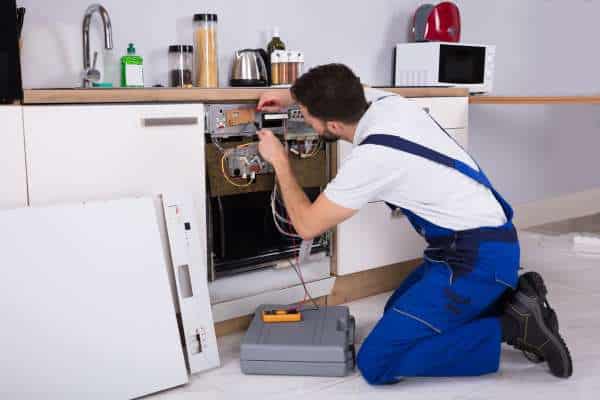
Asking, “Why is my Dishwasher Not Draining?” one key component to check is the drain pump. The drain pump plays a crucial role in expelling water from your dishwasher after a wash cycle. If it malfunctions or gets damaged, the water won’t drain properly, leading to puddles inside the machine. Common causes of a faulty drain pump include blockages, worn-out seals, or damage from debris. To inspect the pump, first disconnect the power, then remove any obstructions around the pump area. If the pump shows signs of wear or doesn’t respond when tested, it may need to be replaced to restore proper drainage functionality.
Assessing the Check Valve
The check valve in your dishwasher plays a crucial role in preventing backflow, ensuring that dirty water doesn’t flow back into the Dish cleaning machine . If the check valve is stuck or damaged, it can prevent proper drainage, leading to water pooling in the bottom of the machine. To assess the check valve, first locate it near the drain hose connection. Inspect it for any signs of debris or wear that could cause it to malfunction. If the valve is stuck, gently clean or free it up. If damaged, it’s important to replace the check valve to restore your dishwasher’s proper drainage function.
Clogged or Blocked Air Gap
A clogged or blocked air gap is a common cause of a dishwasher not draining. The air gap prevents dirty water from flowing back into the dishwasher, ensuring a clean wash cycle. Located on the sink or countertop, it’s an important part of your dishwasher’s drainage system. Over time, debris and food particles can clog the air gap, leading to drainage issues. To clean it, simply remove the cap and use a small brush or a pin to clear any blockages. Running water through the gap can also help flush out debris. Regular maintenance of the air gap can prevent drainage problems and improve Dish cleaning machine performance.
Problem with the Garbage Disposal
A common cause of dishwasher drainage issues is a problem with the garbage disposal. The dishwasher and garbage disposal are connected through the same drain line, so if the disposal is clogged or not functioning properly, it can prevent water from draining from the dishwasher. To check if the garbage disposal is the culprit, first make sure the disposal is clear of debris. Run the disposal to ensure it’s working, and check the drain hose connection between the Dish cleaning machine and the disposal. If the hose is clogged or blocked, disconnect it and clean it thoroughly. This simple step can often resolve drainage problems quickly.
Examining the Dishwasher Drain Solenoid
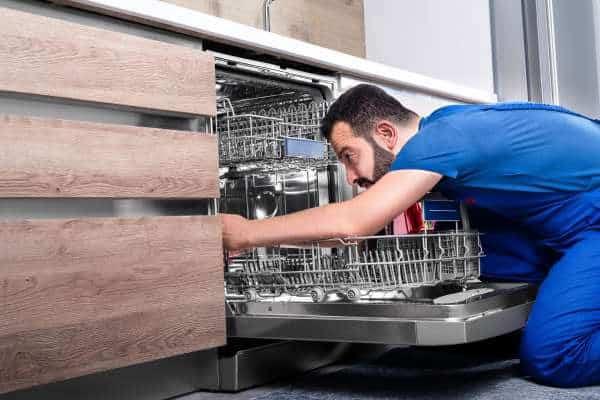
The dishwasher drain solenoid plays a crucial role in the drainage process by controlling the flow of water during the drain cycle. It operates by activating a valve that allows water to exit the Dish cleaning machine . If the solenoid is faulty, the Dish cleaning machine may fail to drain properly. To test the solenoid, you can use a multimeter to check for continuity. If it’s not functioning, replacing the solenoid is necessary. Disconnect the power, locate the solenoid near the pump, and remove the old one. Install the new solenoid, ensuring it’s securely connected. This simple fix can restore proper drainage and prevent water buildup in your Dish cleaning machine .
Malfunctioning or Dirty Drain Pump Motor
A malfunctioning or dirty drain pump motor is a common culprit when your dishwasher fails to drain. Over time, debris can accumulate, hindering the motor’s functionality and preventing water from exiting the appliance efficiently. To determine if the motor is at fault, access the pump under the Dish cleaning machine and listen for a humming sound without water movement, which indicates a blockage or failure. Carefully clean any debris from the motor and impeller to ensure it is not obstructed. If cleaning does not resolve the issue, testing the motor with a multimeter will confirm if it’s time for a replacement to restore optimal drainage to your Dish cleaning machine.
Electrical or Control Board Issues
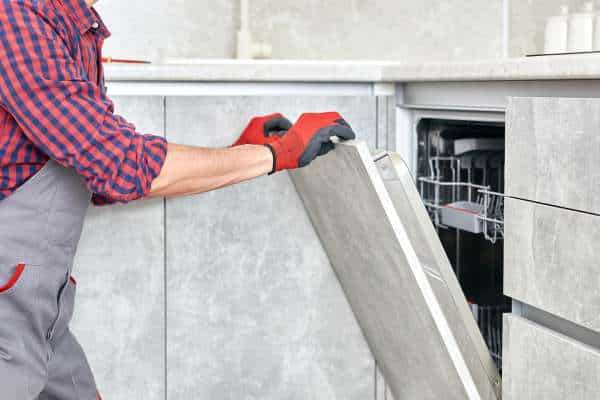
Electrical problems or a malfunctioning control board can be the root cause of your dishwasher not draining. The control board manages the operations of the entire Dish cleaning machine , including the draining cycle. If it fails, the drainage process may not trigger, leaving water in the bottom. To troubleshoot, first, ensure the Dish cleaning machine is unplugged for safety. Inspect the control board for visible signs of damage or burnt components. If you notice any issues, you may need to replace the board. In some cases, a reset of the control board can solve the problem, but for more severe malfunctions, it’s best to call a professional technician for repair or replacement.
Conclusion
if you’re wondering, “Why is my Dishwasher Not Draining”, it could be due to several common issues such as clogged filters, blocked hoses, or a malfunctioning control board. Identifying the root cause is essential to resolving the problem efficiently. By following the troubleshooting steps outlined, you can address most drainage issues yourself. However, if the problem persists or requires complex repairs, seeking professional help is always a good option. A properly functioning Dish cleaning machine not only saves time but also ensures your dishes come out clean and spotless. Regular maintenance can also prevent future drainage issues, keeping your appliance in top condition for years to come.

